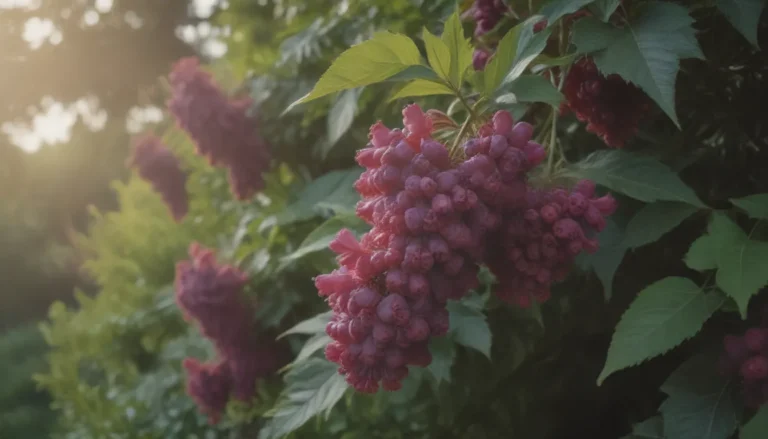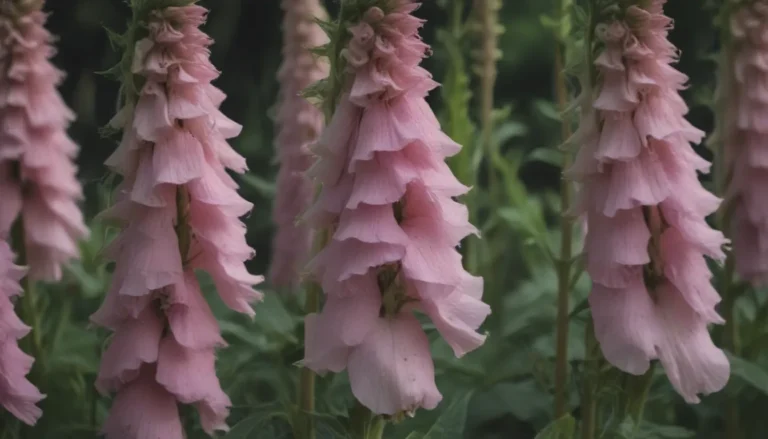Companion Plants for Peppers: Boosting Your Garden’s Productivity
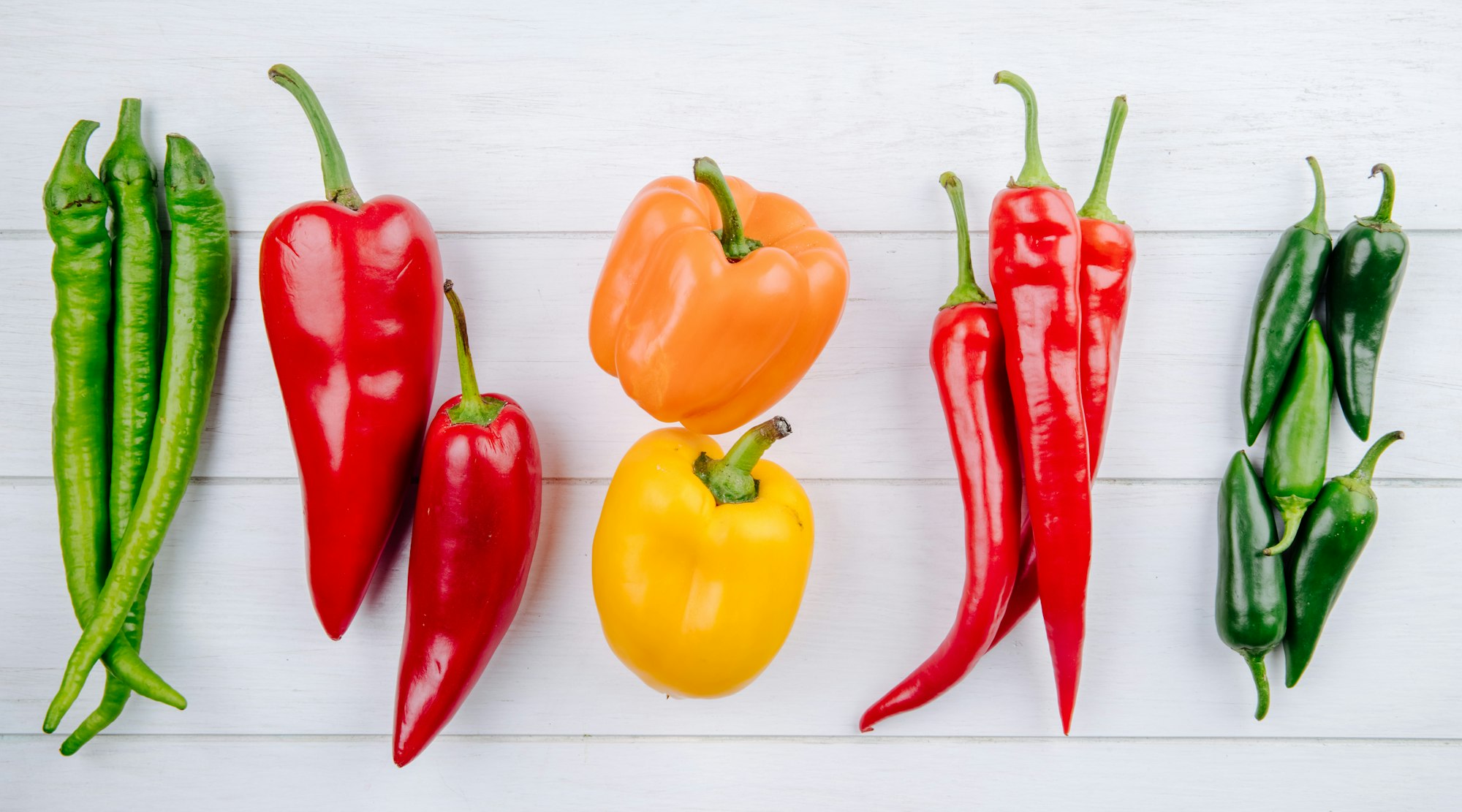
Are you ready to take your pepper-growing game to the next level? If you’re passionate about cultivating delicious, healthy peppers, you’re in for a treat! Today, we’re diving deep into the world of companion planting – a gardening technique that can supercharge your pepper plants’ growth, naturally ward off pests, and even enhance the flavor of your harvest.
In this comprehensive guide, we’ll explore the ins and outs of companion planting for peppers, highlighting seven plants that are perfect pepper companions. We’ll also share some expert tips on what to avoid planting near your precious peppers. So, grab your gardening gloves, and let’s get started on this exciting journey to create a thriving, biodiverse pepper garden!
What is Companion Planting, and Why Should You Care?
Before we jump into our list of top companion plants, let’s take a moment to understand what companion planting is all about. Simply put, companion planting is the practice of growing different plants together for mutual benefit. It’s like creating a little plant community where everyone looks out for each other!
While some companion planting advice might be rooted in folklore, modern researchers are actively studying these age-old gardening practices. The core idea is to create a biodiverse ecosystem where plants support and enhance each other’s growth. Here’s why companion planting is worth your attention:
- Pest Control: Some plants naturally repel pests that might harm your peppers.
- Disease Prevention: A diverse garden is often more resilient against diseases.
- Improved Growth: Certain plants can enhance the soil or provide beneficial shade.
- Space Efficiency: Companion planting helps you make the most of your garden space.
- Enhanced Flavors: Some companions can even improve the taste of your peppers!
Now that we understand the basics, let’s explore the seven best companion plants for your pepper garden!
7 Perfect Companion Plants for Peppers
Ready to discover the ideal plant buddies for your peppers? Here are seven companion plants that will help your pepper plants flourish:
1. Basil: The Aromatic Defender
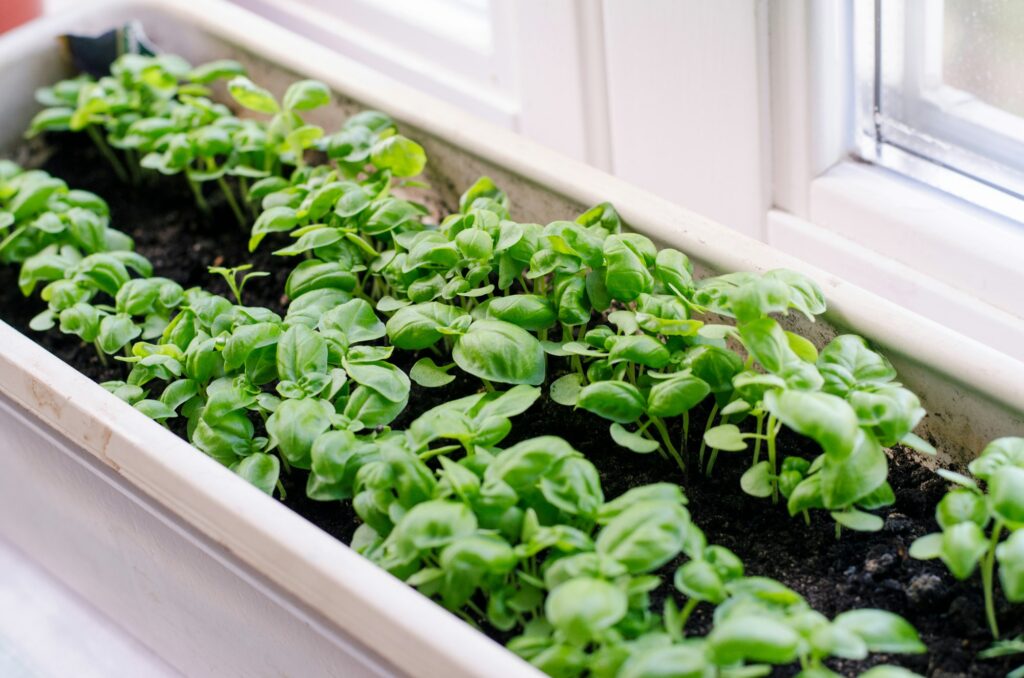
Basil isn’t just a delicious herb – it’s also a fantastic companion for your pepper plants. Here’s why basil and peppers make such a great team:
- Ground Cover: Basil provides a dense ground cover that traps heat and moisture, creating a cozy environment for pepper roots.
- Pest Repellent: The strong aroma of basil repels harmful insects like aphids and spider mites.
- Flavor Enhancer: Not only does basil protect your peppers in the garden, but it also complements their flavor in the kitchen!
Pro Tip: Plant basil around the base of your pepper plants, leaving enough space for both to grow comfortably.
2. Carrots: The Underground Allies
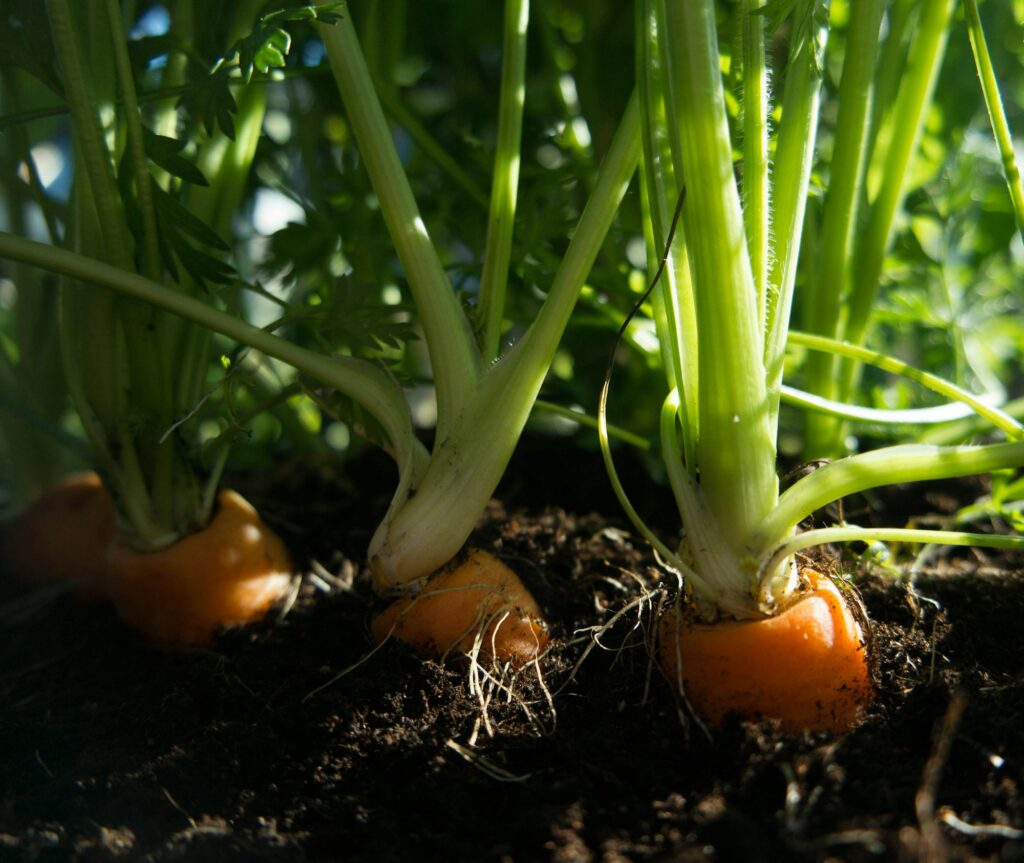
You might be surprised to learn that carrots and peppers are excellent garden companions. Here’s how these root vegetables support your pepper plants:
- Shade Providers: Pepper plants offer shade to delicate carrot tops, protecting them from harsh sunlight.
- Living Mulch: Carrots act as a living mulch, suppressing weeds around your pepper plants.
- Soil Improvers: As carrots grow, they help loosen the soil, making it easier for pepper roots to develop and spread.
Pro Tip: Sow carrot seeds in a ring around your pepper plants, about 6-8 inches away from the stem.
3. Cilantro: The Pest-Repelling Herb
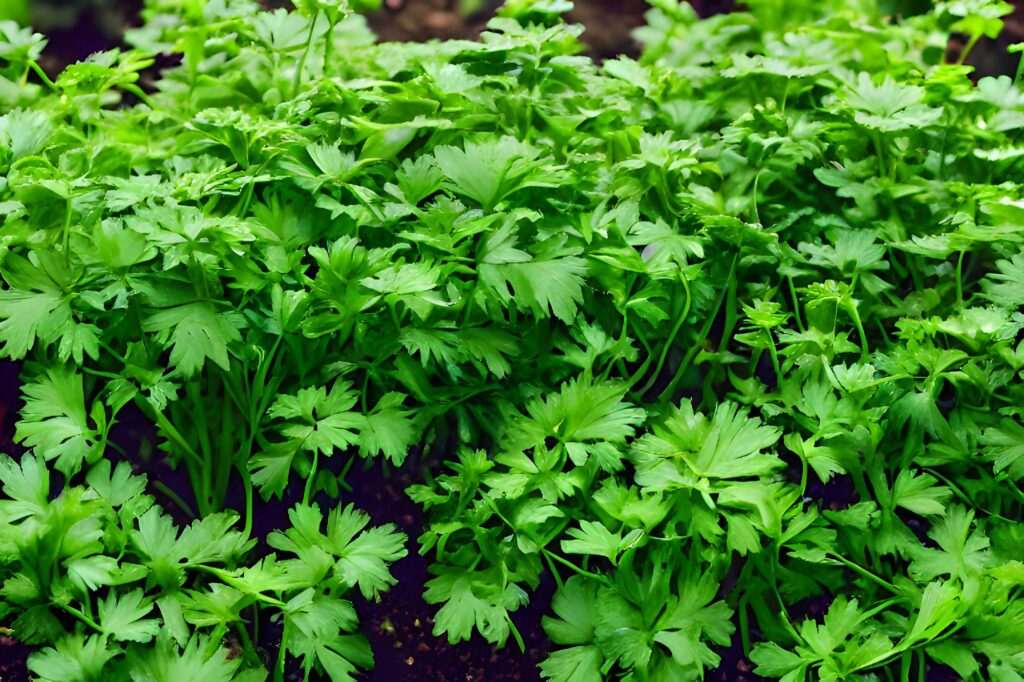
Cilantro (also known as coriander) is more than just a zesty addition to your salsa – it’s also a valuable companion for your pepper plants:
- Beneficial Insect Attractor: Cilantro flowers attract helpful insects like hoverflies and parasitic wasps.
- Pest Repellent: The strong scent of cilantro helps repel pests like spider mites and aphids.
- Space-Efficient: Its low-growing nature means cilantro won’t compete with pepper plants for space.
Pro Tip: Allow some of your cilantro plants to flower to maximize their pest-repelling benefits.
4. Marigolds: The Colorful Guardians

Marigolds aren’t just pretty faces in the garden – they’re also valuable allies for your pepper plants:
- Pest Deterrent: While the effectiveness is still debated, many gardeners swear by marigolds for deterring nematodes and whiteflies.
- Beneficial Insect Attractors: Marigolds attract ladybugs and lacewings, which prey on common pepper pests.
- Garden Beautifiers: These vibrant flowers add a pop of color to your vegetable garden.
Pro Tip: Plant marigolds in a border around your pepper patch for maximum visual impact and pest protection.
5. Nasturtiums: The Sacrificial Decoys
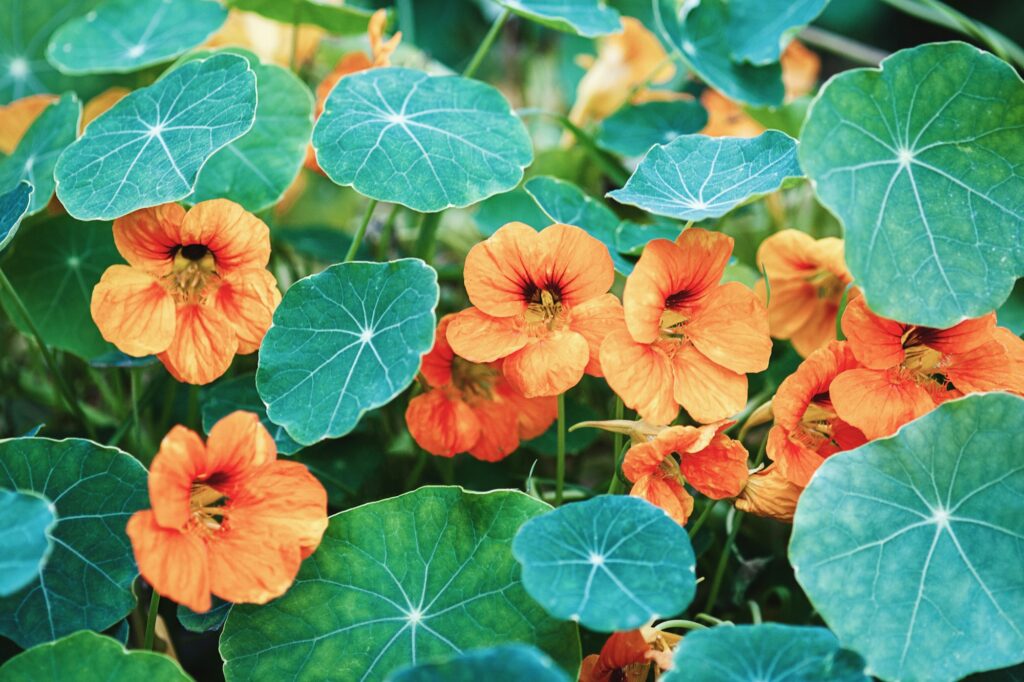
Nasturtiums play a unique role in companion planting for peppers:
- Aphid Magnets: Nasturtiums attract aphids, drawing them away from your pepper plants.
- Beneficial Insect Attractors: They also attract insects that feed on aphids, creating a natural pest control system.
- Edible Flowers: As a bonus, nasturtium flowers are edible and make a beautiful, peppery addition to salads!
Pro Tip: Plant nasturtiums at the edges of your garden to create a “trap crop” for aphids.
6. Onions: The Pungent Protectors
Onions are more than just a kitchen staple – they’re also excellent companions for pepper plants:
- Pest Repellent: The strong scent of onions helps ward off pests like slugs, aphids, and mites.
- Space Efficient: Onions can be planted closely to peppers without competing for nutrients.
- Flavor Enhancer: Growing onions near peppers can lead to more flavorful harvests of both vegetables.
Pro Tip: Intersperse green onions or chives among your pepper plants for continuous pest protection.
7. Spinach: The Soil-Saving Superfood
Spinach might seem like an unlikely companion for peppers, but it offers several benefits:
- Soil Protector: Spinach helps shade the soil and retain moisture around pepper plants.
- Weed Suppressor: Its dense growth helps prevent weeds from taking hold.
- Beneficial Insect Attractor: Spinach flowers attract pollinators and other helpful insects.
Pro Tip: Plant spinach early in the season, and you may be able to harvest it before your pepper plants reach full size.
Maximizing the Benefits of Companion Planting for Peppers
Now that we’ve explored the best companion plants for peppers, let’s dive into some expert tips to help you make the most of this gardening technique:
Understanding Plant Compatibility
While we’ve focused on beneficial companions, it’s equally important to know which plants don’t play well with peppers. Here are a few to avoid:
- Brassicas: Plants like broccoli, cabbage, and kale can hinder pepper growth.
- Beans: While beans are great for many companion planting schemes, they’re not ideal for peppers.
- Fennel: This herb can inhibit the growth of many plants, including peppers.
- Apricot Trees: If you have fruit trees in your garden, keep peppers away from apricots.
Implementing Crop Rotation
Companion planting goes hand in hand with smart crop rotation. Here’s why it matters:
- Disease Prevention: Rotating crops helps prevent the buildup of soil-borne diseases.
- Nutrient Balance: Different plants use different nutrients, so rotation helps maintain soil health.
- Pest Control: Changing plant locations can disrupt pest life cycles.
Pro Tip: Avoid planting peppers, tomatoes, eggplants, and potatoes in the same spot more than once every three years.
Creating a Diverse Ecosystem
The key to successful companion planting is diversity. Here’s how to create a thriving garden ecosystem:
- Mix It Up: Combine plants of different heights, growth habits, and blooming times.
- Include Flowers: Incorporate flowering plants to attract pollinators and beneficial insects.
- Think Vertically: Use trellises or cages to grow vining plants alongside your peppers.
Observing and Adapting
Remember, every garden is unique. What works in one climate or soil type might not be as effective in another. Here’s how to fine-tune your companion planting strategy:
- Keep a Garden Journal: Record which combinations work well and which don’t.
- Experiment: Try different companion plant combinations each season.
- Be Patient: Some benefits of companion planting may take time to become apparent.
Bringing It All Together: Designing Your Pepper Companion Garden
Now that you’re armed with knowledge about the best companion plants for peppers, it’s time to put it all into practice. Here’s a step-by-step guide to designing your pepper companion garden:
- Choose Your Location: Select a sunny spot with well-draining soil for your pepper plants.
- Prepare the Soil: Enrich your soil with compost or well-rotted manure before planting.
- Plant Your Peppers: Space pepper plants about 18-24 inches apart.
- Add Companion Plants: Intersperse your chosen companion plants among the peppers, considering their mature sizes and growth habits.
- Create Borders: Use marigolds or nasturtiums to create attractive, pest-repelling borders around your pepper patch.
- Implement Vertical Elements: Add trellises or cages for vining companions like pole beans (just keep them at the edge of your pepper patch).
- Maintain and Observe: Regularly check your garden for signs of pests or disease, and note how your companion plants are performing.
Conclusion: Embracing the Power of Companion Planting
Companion planting for peppers is more than just an old gardening trick – it’s a powerful way to create a thriving, biodiverse garden ecosystem. By carefully selecting plants that complement and support your peppers, you can boost productivity, deter pests naturally, and even enhance the flavor of your harvest.
Remember, the key to successful companion planting is observation and experimentation. Don’t be afraid to try different combinations and learn from your experiences. With time and practice, you’ll develop a keen sense of which companions work best in your unique garden environment.
So, are you ready to transform your pepper patch into a vibrant, productive oasis? Grab your gardening tools, select your favorite companion plants, and get ready to watch your pepper plants thrive like never before. Happy planting, and may your harvests be bountiful!


